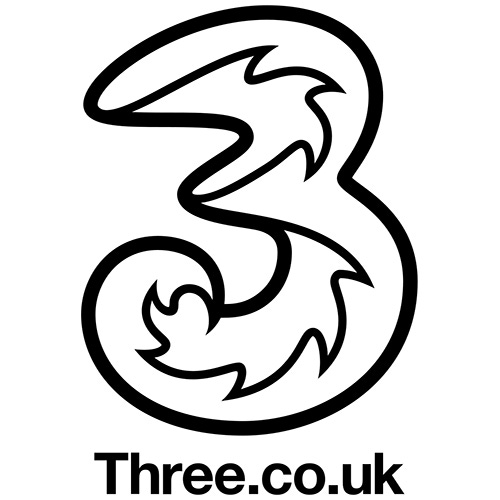
The curse of the smallest mobile operator in any market is to have fewer paying customers than any rival, but the same need for a country-spanning network.
Just ask Three UK. At the end of June, it counted only 13.5 million customers, compared with 17.2 million at Vodafone and 33.1 million at Virgin Media O2 (incumbent BT does not disclose the number), while maintaining one of the UK's biggest 5G networks. Population coverage has ticked up to 56%, it says – putting it a whisker ahead of BT.
It explains why capital expenditure at Three (sometimes called H3G) equates to a monstrous 28% of revenues. That is four percentage points higher than the first-quarter figure at BT, which is not only building a 5G network but also laying fiber to millions of UK homes.
Deduct capex from core earnings, and Three's first-half loss widened a third year-on-year, to £73 million ($89 million).
But slowing the pace of 5G rollout would risk the loss of customers to Three's bigger rivals. That seemed to have happened about a year ago, when results showed that about 400,000 "registered" customers had disappeared since June 2019.
The update issued today revealed the number is up by 600,000 in the last year. The pace of growth is accelerating, too.
Since December, Three has added 400,000 new subscribers. And on the all-important postpaid side, it gained nearly half a million.
"We added almost as many customers as competitors combined," said Darren Purkis, Three's chief financial officer, on a call with Light Reading.
Figure 1:  (Source: Three UK, Enders Analysis; note: figures are in thousands)
(Source: Three UK, Enders Analysis; note: figures are in thousands)
The results suggest Three has been less eager to raise prices than BT, which recently reported a 5% year-on-year increase in quarterly consumer revenues after jacking up fees.
First-half service revenues grew only 3% at the smaller company, to £754 million ($916 million), despite the higher rate of customer growth. And overall sales were unchanged, at about £1.18 billion ($1.43 billion).
"We've seen fewer customers buying new handsets," Purkis explained.
"There are a couple of things in that. One is the chipset shortage across the industry, which means there has not been the same availability. There is also the cost-of-living crisis, which has meant there is a lower propensity for people to upgrade handsets."
Purkis sounds unfazed, noting that handsets contribute a relatively small amount to company profits. Yet with its flat sales and high capital intensity, Three needs to be super-vigilant about cost management. Given the inflationary spiral to which Purkis alludes, that is no easy thing.
Leaner, meaner
Encouragingly, though, Three's core earnings (lopping off depreciation and amortization costs) rose 4% for the first quarter, to about £261 million ($317 million), while its gross margin improved by two percentage points, to 63%.
"We've managed the cost base in a fairly efficient way and have always been relatively lean," said Purkis.
Indeed, with just 4,000 employees (excluding staff at outsourced contact centers), Three looks positively skeletal alongside BT and its workforce of about 98,000 people (although BT obviously has a much broader scope of activities).
Today's number is also considerably less than the 5,400 cited by former CEO Dave Dyson at a press conference in April 2019.
While it is unclear if Dyson was including contractors in his estimate, Three's headcount did fall in late 2020 when it made cuts across the organization, acknowledges Purkis.
But it is now growing again as Three chases opportunities in the enterprise sector.
"We had no B2B team at all two years ago and now have 150 people," said Purkis.
Labor costs have risen as the workforce grows, and Three has also this year awarded a pay rise of "up to" 12.6% to its 2,500 retail employees, a ceiling that exceeds both current inflation and BT's most generous offer of 8% for some of its staff (thousands of whom recently went on strike, demanding a bigger increase).
But Purkis says Three doubled the size of its enterprise business last year and is on track to do the same in 2022. It is targeting a 12% share of that market by 2026, up from 3% earlier this year.
Want to know more about 5G? Check out our dedicated 5G content channel here on Light Reading.
While rising energy fees are a concern, Three has hedged 70% of its energy costs for cell sites (which account for the bulk of energy expenses) until 2024.
Another cost-mitigation strategy has been to reduce the number of contractors it uses. By dividing jobs between a smaller number of firms, Three has been able to negotiate more favorable deals, says Purkis.
A long-running upgrade of IT systems should also eventually start to pay off next year.
Three is currently forced to maintain dual systems at significant expense until it has migrated all customers to the newer of the two platforms.
"We have only gone live with B2B customers," said Purkis.
"Our consumers will go live from Q4 this year and then we'll migrate the existing base next year. We'll get the real benefit of a cost upside in late 2023 and 2024."
The company also plans to switch off the 3G technology that inspired its name by the end of 2024, allowing it to "refarm" spectrum for newer mobile generations and slash operating costs.
"There is not just the cost to run but the investment you need to keep it alive," said Purkis.
If Three can sustain customer growth at the current rate, a future minus the eponymous standard could bring much juicier profits.
Related posts:
— Iain Morris, International Editor, Light Reading
Read more about:
EuropeAbout the Author(s)
You May Also Like




_International_Software_Products.jpeg?width=300&auto=webp&quality=80&disable=upscale)







